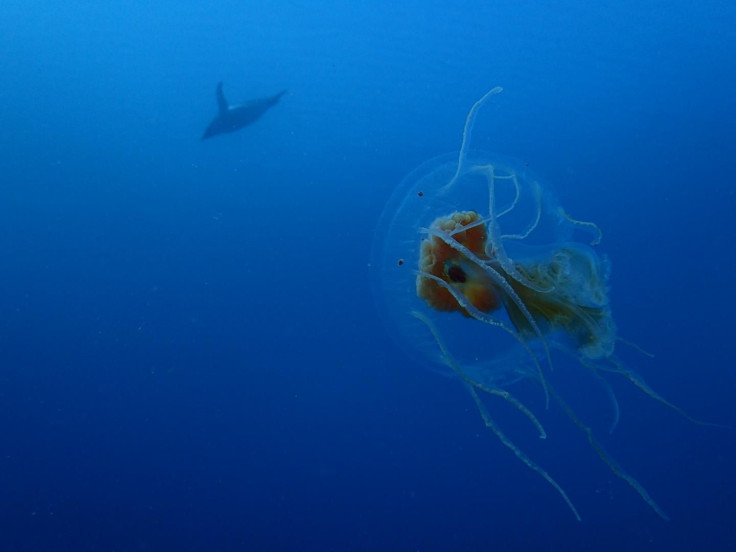WATCH: Cameras Catch Penguins Eating Jellyfish, Other Gelatinous Organisms
Penguins are unusual birds and popular in the public imagination, thanks to numerous documentaries and films (animated, mostly) that feature them. And while they have been subject of scientific research for a long time, it seems they can still spring a surprise or two.
Researchers have found that four different species of penguins that live in southern ocean waters (south of the 30 degrees latitude) routinely prey on jellyfish and other gelatinous organisms, collectively called “gelata” by the researchers. This food group was not previously associated with penguins at all, and it creates a new link in the marine food web.
The researchers made this discovery when they attached miniature cameras onto 106 penguins from four different species, at seven breeding sites. The cameras “were in place for only one sea outing per penguin, to minimize potential disturbance to the birds,” according to a statement Monday by the Ecological Society of America, publishers of the journal where the researchers published their study.
Almost 200 attacks by penguins on gelata were seen in over 350 hours of footage that was collected. The four species of penguins shown hunting gelata (which includes jellyfish) were Adélie penguins (Pygoscelis adeliae), yellow-eyed penguins (Megadyptes antipodes), Magellanic penguins (Spheniscus magellanicus), and little penguins (Eudyptula minor).
Gelata are a poor source of nourishment, in terms of providing calories, but nonetheless, large animals such as sea turtles and ocean sunfish can survive on gelatinous diets. Penguins are warm-blooded and have higher energy demands, but can now still be counted as confirmed “jellyvores,” the statement said. Adélie, Magellanic, and yellow-eyed penguins meet over 1 percent of their daily energy needs through gelata consumption and little penguins almost 2 percent.

Jean-Baptiste Thiebot, a postdoctoral fellow at the National Institute of Polar Research in Tokyo and lead author of the study, said in the statement that the role of gelata in the carbon cycle may have been underrated all this time. Members of the informally named group come from very different branches of the tree of life, in fact, and are clubbed together only on the basis of a gelatinous physique and ocean habitat.
The penguins were also found to be quite discerning in their choice of which gelata they seemed to prefer eating. Carnivorous gelata, such as species of “true” jellyfish (Cnidaria) and “comb jellies” (Ctenophora) were hunted often. All four penguin species consumed true jellyfish, with 187 different Cnidaria species spotted in the videos. Between Magellanic and little penguins, 11 species of Ctenophora were also eaten.
Vegetarian gelata, on the other hand, were not pursued by the penguins despite appearing in the videos. Salps are a species more closely related to humans than jellyfish, and they feed on phytoplankton. They look like jet-propelled tubes of jelly and can, in some phases of their lives, attach together to form chains, tubes, wheels and such shapes that are as much as 60 feet long. The penguins did not seem particularly interested in them.
The paper, titled “Jellyfish and other gelata as food for four penguin species – insights from predator-borne videos,” appeared online in the journal Frontiers in Ecology and the Environment.
© Copyright IBTimes 2024. All rights reserved.



















